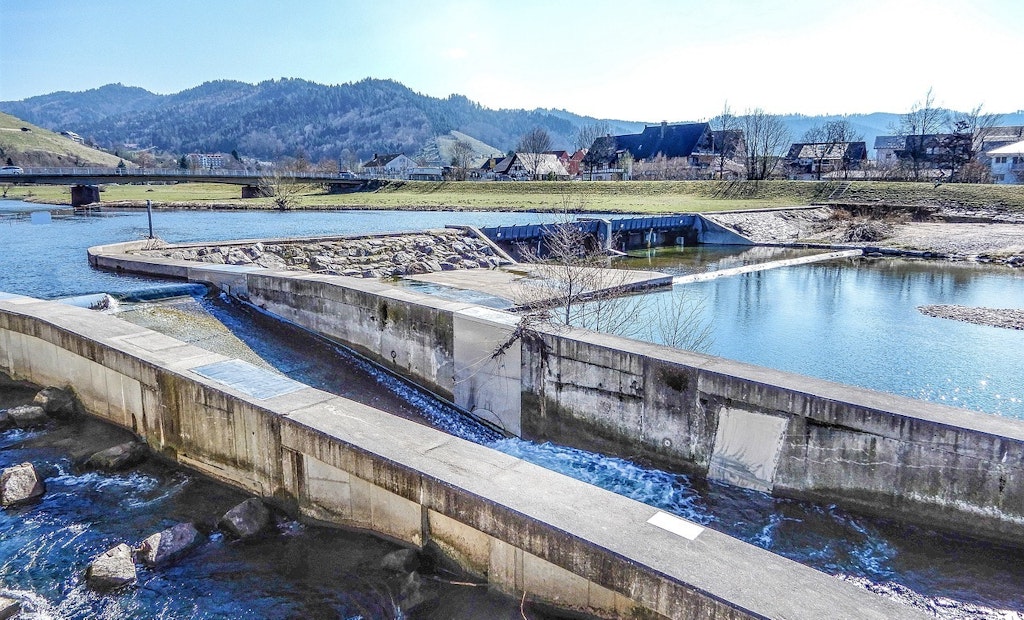Interested in Odor Control?
Get Odor Control articles, news and videos right in your inbox! Sign up now.
Odor Control + Get AlertsBack in 2014, AMETEK Arizona Instrument’s lab manager and research chemist had the unique opportunity to visit a wastewater treatment facility in Tolleson, Arizona. An operations manager who was concerned about an unpleasant smell reported in the area extended the invitation. The air-quality testing protocol of Maricopa County states that when a facility receives three odor complaints from nearby residents, management must test the air at the closest occupied location. In this instance, that location was an elementary school on the corner of the nearest major intersection.
The portable J605
Representatives from AMETEK Arizona Instrument brought a Jerome J605 hand-held gold film hydrogen sulfide gas analyzer fitted with an ammonia-scrubbing filter to help identify the origin of the obnoxious odor. Locals described the odor as a pungent aroma that smelled like burned materials. It is important to note the surrounding area was also home to a dairy farm as well a meatpacking facility, all within 2 miles of the school. Because H2S has a distinct rotten egg odor, it was unlikely that the “burned materials” smell was being caused by H2S. However, analysis was still required by law, so the operations manager contacted AMETEK Arizona Instrument.
The Jerome J605 was used to sample air in the school parking lot for 30 minutes. It was set on survey mode and in Range 0, which is used to measure from 3 ppb to 100 ppb hydrogen sulfide, but did not detect any H2S during the 30-minute allotment. The elementary school was notified that no hydrogen sulfide gas was detected on the premises.
Testing at the wastewater treatment plant
In addition to the testing conducted at the school, a perimeter test was conducted at the wastewater treatment facility itself. The operations manager walked along the surrounding fence and sampled the air with the J605 in survey mode. During the test, the instrument read 0.00 ppb for most of the fence line. The only exception was the area where the wastewater entered the facility. The instrument measured concentrations as high as 110 ppb at the inlet, but as the instrument left the high concentration area, the readings returned to 0.00 ppb. A few processing areas smelled of ammonia and chlorine bleach, but no H2S signal was produced.
After sampling along the perimeter, the facility was surveyed from end to end through the middle of the compound, starting in the north and heading to the south, and again starting from the east heading to the west. During the north/south testing, the instrument did not register a reading above 0.00 ppb. One section that was traversed from east to west was an area of sludge drying beds where solid waste was air dried before being shipped or sold. The material beds were about 30 percent filled and smelled like plant fertilizer. No rotten egg smell was noticed, and the instrument did not provide a reading above 0.00 ppb. When the instrument passed near the area where the raw sewage entered the building, it again spiked into the 100 ppb range.
The final areas that were tested were the air scrubbers used at the exhaust of the sealed sewage processing station. This facility had two cylindrical scrubbers rising about 20 feet off the ground with a diameter of about 6 feet each. The scrubbers were filled with activated carbon and were in year three of five before needing to be replaced. The operations manager informed the representatives that no prior testing had been conducted and they would be performing the initial tests to ensure the scrubbers were maintaining efficiency. At the top of the scrubber where there was an inlet of air to be filtered, the instrument measured close to 3 ppm H2S for Scrubber 1 and 8 ppm H2S for Scrubber 2. The gases coming into the scrubbers were measured at 1 ppm, but there was a pressure gradient that could have influenced the results.
Keeping the air safe
Overall, the Jerome J605 was able to determine that hydrogen sulfide emissions at the Tolleson wastewater facility were below recommended levels. The visit also allowed for the demonstration the J605’s use in monitoring scrubber efficiency.
An additional topic that was discussed was the advantages of performing solids content analysis. The operations manager stated they could test solids in sludge, but do not typically do this because the sludge is air dried for weeks before distribution off-site. While that works fine for facilities that have the time and space to dry everything on site using only ambient air, the same cannot be said of facilities that require the use of ovens or other drying equipment. For those, a rapid loss on drying moisture/solids analyzer would be essential for testing the solids content prior to shipping out the dried material. Doing so would help ensure that the dryers are working efficiently.
Mercury testing would also be worth pursuing, but difficult as a stand-alone method since wastewater treatment plants are generally interested in other metal contaminant levels in addition to mercury. These observations made by AMETEK Arizona Instrument’s representatives describe a multifaceted approach to a wastewater treatment using not only toxic gas analyzers but also rapid loss-on-drying technology to aid them in their efficiency.
If you would like to learn more about the Jerome line of H2S analyzers, visit www.azic.com or call 602-313-0836.






